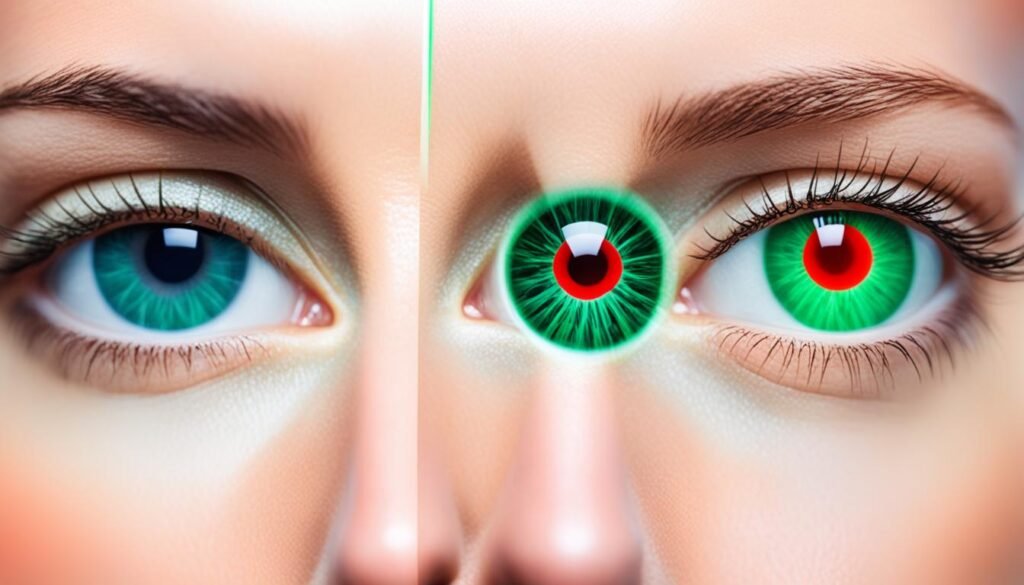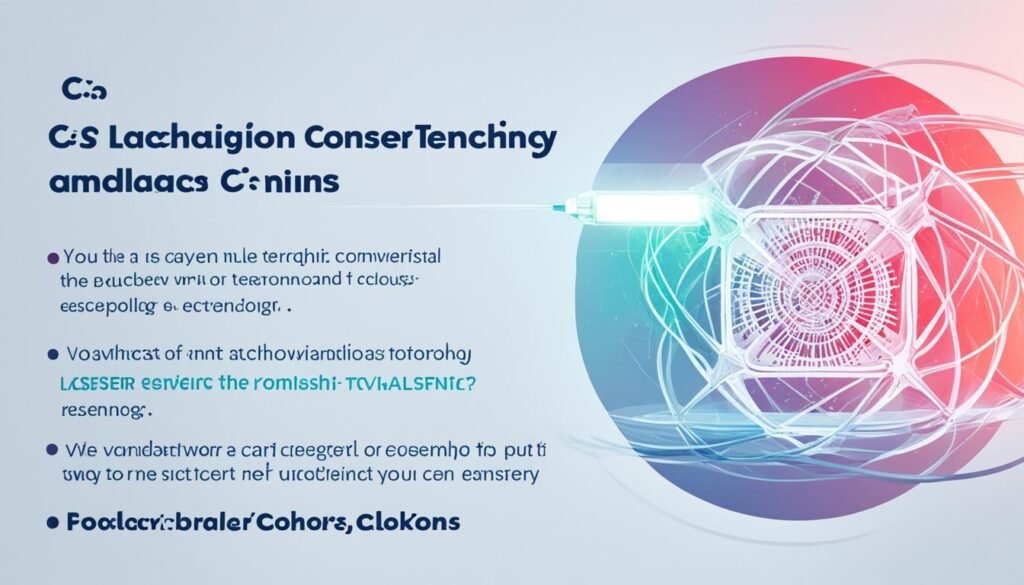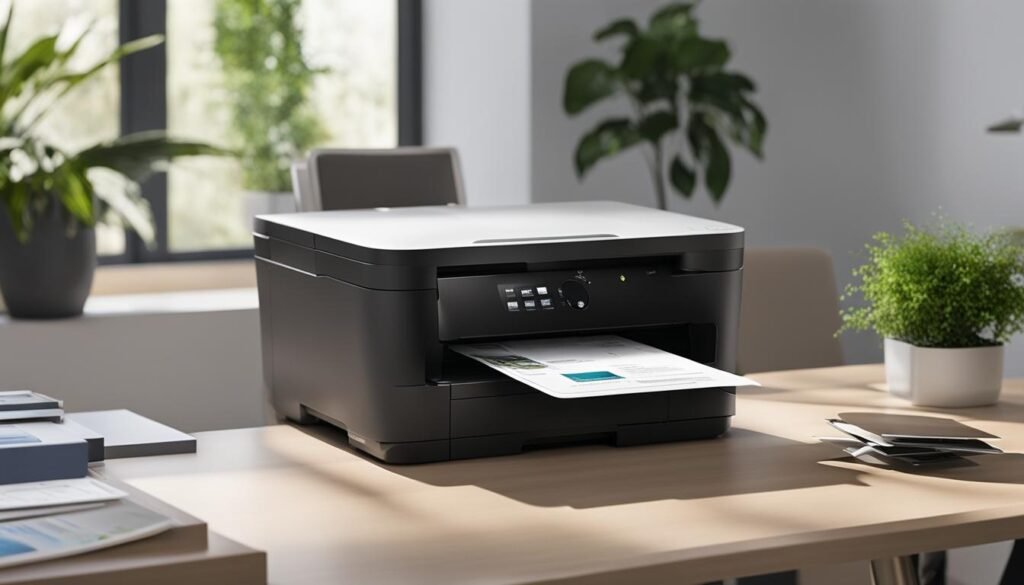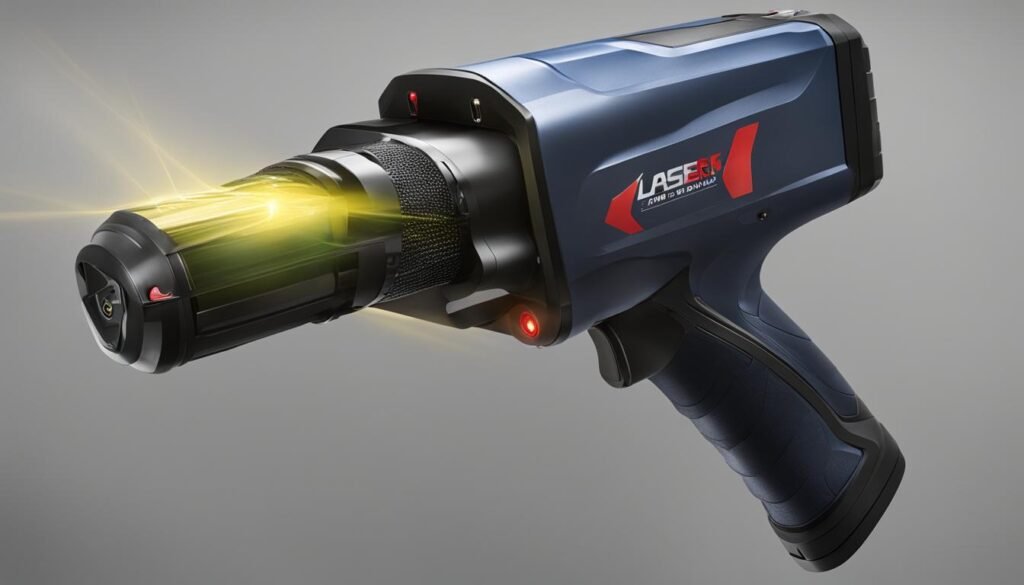Welcome to our article on C lasers, where we explore the value, pros, and cons of these high-quality laser options. Whether you’re considering CO2 lasers or fiber lasers, understanding their benefits and drawbacks is crucial in making an informed decision.
In this article, we will delve into the world of C lasers and provide you with insights into their application, durability, and performance. By the end, you’ll have a better understanding of the best C laser options for your specific needs.
So, let’s dive in and discover the pros and cons of C lasers, starting with CO2 lasers, which are known for their versatility and affordability.
Contents
- 1 Pros of CO2 Lasers
- 2 Cons of CO2 Lasers
- 3 Benefits of Fiber Lasers
- 4 When to Choose Fiber Lasers
- 5 Comparison between CO2 Lasers and Fiber Lasers
- 6 LASIK Surgery Pros and Cons
- 7 Pros of LASIK Surgery
- 8 Cons of LASIK Surgery
- 9 Applications of CO2 Laser Resurfacing
- 10 How CO2 Laser Resurfacing Works
- 11 Conclusion
- 12 FAQ
- 12.1 What are the pros of CO2 lasers?
- 12.2 What are the cons of CO2 lasers?
- 12.3 What are the benefits of fiber lasers?
- 12.4 When should one choose fiber lasers?
- 12.5 What is the comparison between CO2 lasers and fiber lasers?
- 12.6 What are the pros of LASIK surgery?
- 12.7 What are the cons of LASIK surgery?
- 12.8 What are the applications of CO2 laser resurfacing?
- 12.9 How does CO2 laser resurfacing work?
Pros of CO2 Lasers
CO2 lasers offer excellent versatility, allowing them to cut and engrave a wide range of materials.
With a CO2 laser, you can work with various materials such as plastic, wood, acrylic, metals, glass, stone, and ceramics. This flexibility makes CO2 lasers a popular choice for artists, craftsmen, and manufacturers.
One of the key advantages of CO2 lasers is the control they provide over the depth of engraving. This precision allows you to achieve intricate designs and detailed engravings.
When it comes to CO2 lasers, you have the option to choose from different bed sizes and power wattages. This flexibility enables you to find a CO2 laser that perfectly suits your specific needs and projects.
Another significant advantage of CO2 lasers is their affordability. They are available at different price points, making them accessible options for individuals and businesses with varying budgets. With the wide availability of CO2 lasers, you can find the best deals that offer both value and quality.
CO2 Laser Versatility
“CO2 lasers are incredibly versatile and can cut and engrave a wide variety of materials, from delicate fabrics to dense metals. This flexibility allows artists and makers to explore endless possibilities and bring their ideas to life.” – Jason Smith, Artist
CO2 Lasers and Affordable Deals
When searching for a CO2 laser, you’ll find that the market offers numerous options at different price points. This variety allows you to find the most affordable CO2 laser that offers excellent value for your money.
Whether you’re a hobbyist, small business owner, or a large-scale manufacturer, affordable CO2 lasers provide an opportunity to incorporate laser cutting and engraving technology into your projects without breaking the bank.
Example table showcasing different CO2 laser models:
| Model | Bed Size (inches) | Power Wattage | Price |
|---|---|---|---|
| Model A | 20 x 12 | 30W | $1,500 |
| Model B | 24 x 16 | 50W | $2,000 |
| Model C | 30 x 20 | 80W | $3,500 |
Summary
CO2 lasers provide exceptional versatility, allowing you to cut and engrave various materials. With control over depth, bed size options, and power wattages, CO2 lasers cater to a wide range of projects and budgets. Their affordability and accessibility make CO2 lasers the go-to choice for many individuals and businesses seeking high-quality yet affordable laser cutting and engraving solutions.
Cons of CO2 Lasers
While CO2 lasers offer versatility and affordability, there are a few drawbacks to consider when deciding on a laser option.
Firstly, CO2 lasers require regular cleaning and alignment of mirrors for beam transmission to ensure optimal performance. This maintenance task can be time-consuming and may lead to additional costs for hiring professionals or for training staff to handle the upkeep.
Secondly, CO2 lasers have lower energy efficiency compared to some other laser types. This means they consume more power during operation, resulting in higher operational costs over time. It’s important to carefully consider the long-term expenses when evaluating the value of a CO2 laser for your needs.
Additionally, CO2 lasers have a shorter lifespan when compared to alternative laser technologies. The vacuum tube technology used in CO2 lasers contributes to their limited lifespan. This means that the laser tube will eventually wear out and need replacement, which can be a considerable expense. Considering the lifespan of a laser is crucial to understanding its overall value.
Furthermore, CO2 lasers typically have larger spot sizes than other laser types. This can impact the level of detail and precision that can be achieved, particularly in applications that require fine engraving or cutting. It’s essential to assess whether the spot size limitations of CO2 lasers align with your specific needs and desired outcomes.
Comparison of CO2 Lasers and Fiber Lasers
| Features | CO2 Lasers | Fiber Lasers |
|---|---|---|
| Versatility | High | Low |
| Material Compatibility | Wide range, including organic and inorganic | Primarily metal |
| Spot Size | Large | Small |
| Maintenance | Regular cleaning and alignment | Low maintenance |
| Energy Efficiency | Lower | Higher |
| Lifespan | Shorter | Longer |
As shown in the table above, CO2 lasers and fiber lasers have notable differences in terms of versatility, material compatibility, spot size, maintenance, energy efficiency, and lifespan. Understanding these distinctions will help you make an informed decision when choosing the laser technology that best suits your requirements.
Benefits of Fiber Lasers
Fiber lasers are highly valued for their exceptional performance in cutting and engraving metal. With their efficiency, long-term stability, and low maintenance requirements, fiber lasers have become the top choice for various industries. Whether it’s steel, stainless steel, aluminum, copper, or brass, fiber lasers can effortlessly cut through these metals, providing precise and clean results.
One of the key advantages of fiber lasers is their ability to generate high peak power, enabling them to handle even the toughest metal cutting tasks. This makes them invaluable in industrial settings where efficiency and accuracy are paramount.
“Fiber lasers revolutionize metal cutting by offering reliable performance, allowing businesses to optimize their operations and meet deadlines effectively.”
– Metal Manufacturing News
In addition to their remarkable cutting capabilities, fiber lasers are known for their dependability. Once properly set up, these lasers require minimal maintenance, reducing downtime and ensuring continuous productivity for businesses.
Fiber lasers have proven to be game-changers in the metalworking industry, offering superior performance, efficiency, and reliability. Their ability to cut various metals with precision and ease has solidified their position as the top choice for businesses seeking top-quality laser services.
When to Choose Fiber Lasers
If your primary focus is cutting and engraving metal, fiber lasers are the ideal option. With their high-quality performance and efficiency, fiber lasers deliver precise results while maintaining a minimal maintenance requirement. These lasers are particularly suited for industrial applications where durability and reliability are crucial.
Fiber lasers are specifically designed to excel in metalworking tasks, offering exceptional cutting and engraving capabilities on various metals, including steel, stainless steel, aluminum, copper, and brass. Whether you’re working on intricate designs or heavy-duty projects, fiber lasers provide the necessary power and precision needed for the job.
Benefits of Fiber Lasers:
- Efficient and precise metal cutting and engraving
- Minimal maintenance requirement
- Long-lasting performance and reliability
- Ideal for industrial applications
When it comes to metalworking, fiber lasers are unmatched in their ability to deliver high-quality results consistently. By investing in a fiber laser, you can optimize productivity, reduce downtime, and achieve excellent precision in your cutting and engraving projects.
“Fiber lasers are the go-to choice for those seeking exceptional performance and reliability in metalworking applications.” – Industrial Laser Magazine
Furthermore, fiber lasers offer the advantage of being compatible with advanced automation features, allowing for streamlined processes and increased efficiency in industrial settings. Their ability to integrate seamlessly with robotic systems makes them an invaluable asset for high-volume manufacturing environments.
Investing in a high-quality fiber laser for your metalworking needs ensures that you can achieve precise and efficient results, while also reducing operational costs and downtime. Whether you’re in the automotive, aerospace, or metal fabrication industry, the reliability and performance of fiber lasers make them an excellent choice for your cutting and engraving tasks.
| Advantages | Disadvantages |
|---|---|
| High-quality metal cutting and engraving | Not suitable for non-metal materials |
| Minimal maintenance | Higher initial investment compared to other laser types |
| Durable and reliable performance | May require specialized training for operation |
| Compatible with automation systems |
Comparison between CO2 Lasers and Fiber Lasers
When deciding between CO2 lasers and fiber lasers, it’s important to consider the material you intend to work with. Both types of lasers have their strengths and are suitable for different applications. Let’s explore the characteristics of each laser and how they compare in terms of versatility and cutting capabilities.
CO2 Lasers
CO2 lasers are known for their versatility and ability to process a wide range of materials, including organic and inorganic substances. These lasers are commonly used in industries such as manufacturing, signage, and even in medical applications. CO2 lasers offer the following advantages:
- Ability to cut and engrave various materials, including wood, plastic, acrylic, glass, and more
- Control over the depth of engraving, allowing for intricate designs
- Available in different bed sizes and power wattages, providing options for different project requirements
- Lower-cost option compared to fiber lasers, making them more accessible for different budgets
However, it’s important to note that CO2 lasers also have some limitations:
- Require regular cleaning and alignment of mirrors for optimal performance
- Lower energy efficiency, resulting in higher operational costs
- Shorter lifespan due to the vacuum tube technology they utilize
- Larger spot sizes compared to fiber lasers
Fiber Lasers
Fiber lasers, on the other hand, excel in cutting and engraving metal with high precision and efficiency. These lasers have become the go-to choice for industries such as automotive, aerospace, and jewelry making. Here are some key advantages of fiber lasers:
- Efficient and precise cutting and engraving of metals like steel, stainless steel, aluminum, copper, and brass
- Long-term stability and low maintenance requirements
- High peak power for faster and more accurate metal processing
While fiber lasers offer exceptional performance for metal cutting and engraving, they may be less suitable for other materials due to their specific wavelength characteristics.
The Choice Depends on Your Specific Application
Choosing between CO2 lasers and fiber lasers ultimately depends on your specific application requirements. If you need versatility to work with a wide range of materials or have a limited budget, CO2 lasers may be the better option. On the other hand, if metal cutting and engraving are your primary focus, fiber lasers provide exceptional precision and efficiency.
Consider the nature of your projects, the materials you work with most frequently, and the level of precision you need. Consulting with laser experts can help you make an informed decision and ensure you choose the laser that delivers the best results for your unique needs.
Now that we’ve explored the comparison between CO2 lasers and fiber lasers, let’s delve into the pros and cons of LASIK surgery in the next section.
LASIK Surgery Pros and Cons

LASIK surgery offers several advantages for individuals seeking vision correction. Let’s take a look at some of the pros and cons of LASIK surgery so you can make an informed decision.
Pros of LASIK Surgery
1. Quick and Safe Procedures: LASIK surgery is a relatively quick and safe outpatient procedure. The entire process usually takes less than 30 minutes for both eyes, and patients can typically return home the same day.
2. Quick Results: Most patients experience improved vision within a few hours after LASIK surgery. The recovery time is relatively short compared to other vision correction procedures.
3. Freedom from Glasses or Contacts: LASIK surgery can reduce or eliminate the need for glasses or contact lenses. This can significantly improve your quality of life and convenience.
Cons of LASIK Surgery
1. Eligibility: Not everyone is eligible for LASIK surgery. Factors such as age, eye health, and corneal thickness can affect candidacy. It’s important to consult with a healthcare professional to determine if LASIK is a suitable option for you.
2. Potential Risks and Complications: While LASIK surgery is generally safe, there are potential risks and complications associated with the procedure. These may include dry eyes, night glare, halos, and the need for retreatment in certain cases.
3. Cost: LASIK surgery is typically not covered by insurance, and the cost can vary depending on several factors, including the surgeon’s expertise and the location of the clinic. It’s essential to consider the financial implications before making a decision.
Before deciding on LASIK surgery, carefully weigh the pros and cons and consult with a qualified healthcare professional. They can evaluate your individual situation and provide guidance on whether LASIK is the right option for you.
Pros of LASIK Surgery
LASIK surgery is a popular and effective procedure that offers numerous benefits for individuals seeking visual correction. Here are some of the key advantages of LASIK:
- Quick and Safe Procedure: LASIK is a quick outpatient procedure that can typically be completed within minutes. It is performed under local anesthesia, ensuring the comfort and safety of the patient.
- Elimination of Glasses and Contacts: With LASIK, many individuals are able to free themselves from the inconvenience and dependency on eyeglasses or contact lenses. This means no more searching for misplaced glasses or dealing with the discomfort of contacts.
- Noticeable Results: One of the remarkable aspects of LASIK is the immediate improvement in vision that most patients experience. Within a few hours after the procedure, many individuals notice a significant enhancement in their visual clarity.
- Long-lasting Effects: LASIK can provide long-term results, allowing individuals to enjoy clear vision for an extended period of time. While some natural changes may occur with age, the majority of patients maintain improved vision for many years after the surgery.
When considering LASIK surgery, it is crucial to consult with an experienced ophthalmologist to evaluate your eligibility and discuss potential risks and complications. While LASIK offers numerous benefits, it’s important to weigh them against your specific needs and circumstances.
Patient Testimonial:
“Getting LASIK surgery was one of the best decisions I have ever made. Not only did it eliminate the hassle of glasses and contacts, but I also noticed a significant improvement in my vision immediately after the procedure. It’s been five years, and I still enjoy crystal-clear vision. I highly recommend LASIK to anyone seeking a long-term solution for vision correction.”
– Sarah Thompson
LASIK Surgery Vs. Glasses and Contacts:
| Aspect | LASIK Surgery | Glasses and Contacts |
|---|---|---|
| Visual Clarity | Provides clear and sharp vision without the need for external aids. | Dependent on wearing glasses or contacts to achieve clear vision. |
| Convenience | Eliminates the hassle of maintaining and wearing glasses or contacts daily. | Requires regular cleaning and maintenance of glasses or contacts. |
| Active Lifestyle | Allows for greater freedom in activities, such as swimming or sports, without worrying about glasses or contacts. | May limit certain activities or require additional precautions. |
| Cost Over Time | While LASIK has an upfront cost, it can lead to long-term savings as there is no ongoing need for glasses or contacts. | Regular expenses for purchasing and replacing glasses or contacts. |
Overall, LASIK surgery offers numerous advantages for individuals seeking improved vision and freedom from glasses and contacts. Its quick and safe procedure, along with noticeable and long-lasting results, make it an appealing option for those looking to enhance their quality of life.
Cons of LASIK Surgery

While LASIK surgery offers numerous benefits, it is important to consider the potential drawbacks and risks involved. Here are some factors to keep in mind before deciding on LASIK:
1. Ineligibility for Certain Individuals
Not everyone is a suitable candidate for LASIK surgery, especially individuals over the age of 40 who may have presbyopia. Presbyopia is a condition that affects near vision and typically occurs with age. LASIK may not be an effective solution for correcting this specific vision issue.
2. Higher Cost
One important consideration is the cost of LASIK surgery. In most cases, LASIK is not covered by insurance, which means patients must bear the full cost themselves. This can make the procedure more expensive for individuals seeking vision correction.
3. Potential Risks and Complications
Like any surgical procedure, LASIK surgery carries certain risks and potential complications. Some individuals may experience dry eyes after LASIK, which can cause discomfort and blurry vision. Additionally, nighttime glare or halos around lights can be a common side effect. In certain cases, retreatment may be necessary to achieve the desired visual outcome.
Despite these considerations, it is essential to consult with a qualified healthcare professional who can assess your individual circumstances and determine if LASIK is a suitable option for you.
| Cons of LASIK Surgery |
|---|
| 1. Ineligibility for Certain Individuals |
| 2. Higher Cost |
| 3. Potential Risks and Complications |
Applications of CO2 Laser Resurfacing
CO2 laser resurfacing is a versatile procedure that offers numerous applications to address various skin concerns. It is widely used by dermatologists and cosmetic surgeons to rejuvenate the skin and achieve desired cosmetic outcomes. The advanced technology of CO2 lasers allows for precise and controlled treatment, making it an effective solution for various skin issues.
Treating Skin Cancer
One of the key applications of CO2 laser resurfacing is the removal of skin cancer cells. The focused energy of the laser can target and eliminate cancerous cells while minimizing damage to the surrounding healthy tissue. This makes CO2 laser resurfacing an effective treatment option for skin cancers such as basal cell carcinoma and squamous cell carcinoma.
Reducing Fine Lines and Wrinkles
CO2 laser resurfacing is highly effective in reducing the appearance of fine lines and wrinkles. The laser energy stimulates collagen production in the skin, which helps in tightening and smoothing out the skin’s surface. This leads to a reduction in the appearance of wrinkles and fine lines, resulting in a more youthful and refreshed appearance.
Treating Skin Discoloration
Another application of CO2 laser resurfacing is the treatment of skin discoloration such as age spots, sunspots, and hyperpigmentation. The laser energy targets and breaks down the excess melanin in the skin, reducing the appearance of discoloration and creating a more even skin tone.
Improving Acne Scars
CO2 laser resurfacing is particularly effective in improving the appearance of acne scars. The laser energy removes the damaged outer layer of the skin, promoting the growth of new skin cells and collagen. This helps in reducing the depth and visibility of acne scars, resulting in smoother and more even skin.
Overall, CO2 laser resurfacing provides a range of applications to address various skin concerns. From treating skin cancer to reducing fine lines and wrinkles, improving skin discoloration, and diminishing acne scars, CO2 lasers offer powerful solutions for achieving desired cosmetic outcomes.
How CO2 Laser Resurfacing Works
CO2 laser resurfacing is a highly effective procedure for improving the appearance of the skin. By utilizing targeted beams of light, this treatment can address a wide range of skin concerns, such as fine lines, wrinkles, acne scars, and discoloration. Understanding how CO2 laser resurfacing works can help you make an informed decision about whether it’s the right option for you.
During the CO2 laser resurfacing procedure, the laser beams are focused on the skin’s surface, precisely removing the superficial layer known as the epidermis. This process is carried out with great precision, allowing the dermatologist or cosmetic surgeon to target specific areas or regions of concern.
As the laser beams interact with the skin, they vaporize the epidermis and generate controlled heat in the underlying layer called the dermis. This thermal energy stimulates the production of new collagen fibers, which are essential for maintaining skin elasticity, firmness, and a youthful appearance. The production of collagen helps to fill out fine lines and wrinkles, while also improving overall skin texture and tone.
Following the CO2 laser resurfacing treatment, the skin enters a healing process. The body naturally replaces the removed epidermal layer with new, healthier skin cells, resulting in a fresher and rejuvenated skin appearance. Throughout the healing process, it is crucial to follow post-treatment care instructions provided by the healthcare professional to ensure proper recovery and optimal results.
CO2 laser resurfacing is often hailed as an effective method for achieving significant improvements in skin quality and appearance. By harnessing the power of laser technology, this treatment offers a non-invasive solution for individuals seeking to address various skin concerns.
Conclusion
In conclusion, when it comes to laser options, CO2 lasers and fiber lasers both have their advantages and are suitable for specific applications. CO2 lasers are versatile and affordable, making them ideal for cutting and engraving various materials with different needs. On the other hand, fiber lasers excel in precision and efficiency when it comes to working with metals.
For those seeking affordability and versatility, CO2 lasers are the go-to option. They offer a wide range of options for different budgets, making them accessible to a larger audience. However, for those focusing on cutting and engraving metals with utmost precision and efficiency, fiber lasers are the best choice.
In order to make an informed decision, it is crucial to carefully assess your specific needs and consult with professionals in the field. They can provide expert guidance and help you choose the laser option that will deliver the best results for your particular application.
FAQ
What are the pros of CO2 lasers?
CO2 lasers are affordable options for various materials and offer excellent versatility in cutting and engraving. They can process plastic, wood, acrylic, metals, glass, stone, ceramics, and more.
What are the cons of CO2 lasers?
CO2 lasers require more maintenance, have low energy efficiency, and a shorter lifespan. They also have larger spot sizes compared to other laser types.
What are the benefits of fiber lasers?
Fiber lasers are efficient, stable, and require minimal maintenance. They provide high precision and are particularly suitable for cutting and engraving metal.
When should one choose fiber lasers?
Fiber lasers are ideal for industrial applications where high-quality and reliable performance are essential. If your primary focus is cutting and engraving metal, fiber lasers are the ideal option.
What is the comparison between CO2 lasers and fiber lasers?
CO2 lasers are versatile and can process a wider range of materials, while fiber lasers excel in cutting and engraving metal with efficiency and precision. The choice depends on your specific application requirements.
What are the pros of LASIK surgery?
LASIK surgery offers quick and safe procedures, quick results, and the ability to live without glasses or contacts. It provides long-lasting results and improves vision within a few hours.
What are the cons of LASIK surgery?
Not everyone is eligible for LASIK surgery, and it may have a higher cost as it is typically not covered by insurance. Potential risks and complications include dry eyes, nighttime glare or halos, and the need for retreatment in certain cases.
What are the applications of CO2 laser resurfacing?
CO2 laser resurfacing can be used to address various skin issues, including removing skin cancer, reducing the appearance of fine lines and wrinkles, treating skin discoloration, and improving the appearance of acne scars.
How does CO2 laser resurfacing work?
CO2 laser resurfacing uses targeted beams of light to remove the superficial layer of the skin. This stimulates the growth of new collagen fibers and results in firmer, smoother, and more youthful-looking skin as it heals.



